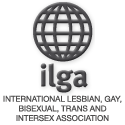After more than a century of oppression, India’s gay community is striding out of the closet.
On a sunny Sunday afternoon, Mumbai’s western suburb of Bandra—home to observant middle-class Roman Catholic and Sunni Muslim families—is packed with people strolling the seaside promenades. The main streets are abuzz with vendors selling cheap shoes and colorful scarves. On the quieter, tree-lined lanes, customers visit specialty boutiques.
Down the 16th Road, a rainbow flag hangs outside one such store: D’kloset. On its exterior, there is a mural of a man pulling another out of a closet. “No, no,” the latter says. “I’m not coming out.”
D’kloset owner Inder Vhatwar will tell you that is time for gay people in India to step out of the closet that has imprisoned them for more than a century. It’s been almost two years since the 31-year-old designer—polite, flirty, and warm—opened D’kloset, which is part clothing store, part gay hangout. The store’s walls are painted in rainbow patterns, and it stocks colorful T-shirts and shiny plastic jewelry. “Many gays like going to parties, and you don’t want to wear the same outfit,” Vhatwar says. “I make fashion I would like to wear at affordable prices.”
Businesses targeted at gays, such as D’kloset, are still rare in India, but it is significant that such enterprises are opening at all in this largely conservative country, where until 2009 same-sex relations were considered a crime. “When I opened the store I thought that religious groups would come and break the glass,” said Vhatwar, who trained as a fashion designer in London. “But nothing happened.”
In the 149 years since homosexuality was outlawed by India’s colonial British administration, no government had the courage to repeal the law. That was left to the Delhi High Court: on July 2, 2009, the court decriminalized same-sex intercourse in a landmark case commonly referred to as 377, a reference to a section of the 1860 Penal Code that bans sexual activity “against the order of nature.” The decision was appealed earlier this year in the Supreme Court, which heard objections from 10 social and religious organizations. Opposition to the case has united conservative organizations across India’s religious spectrum—many of whom might otherwise be hostile to each other—and even includes a children’s-rights NGO that is trying to argue that legalizing homosexuality will increase child sexual abuse.
Even if the decision is upheld—as gay-rights groups and legal experts think it will be—India’s gays and lesbians will still not have the same rights as heterosexuals. They will have no protection against discrimination at work or school, or when buying or renting a house. Same-sex marriage will still not be legal, nor will adoption. Such advances will require new laws from India’s parliament—and no one expects that to happen any time soon.
Still, after more than a century of being spurned by their families, reviled in public and harassed by police, India’s gays and their supporters say the 377 ruling is encouraging a gradual emergence from the shadows. “They’re not so open with their families yet, but they feel relatively more free now,” said Anand Grover, lawyer and director of the Lawyers Collective HIV/AIDS Unit. While the situation remains difficult for many homosexuals, particularly in rural areas, Grover points to the new gay tourism market, the spread of queer parties at nightclubs, and the rising divorce rate among gay men who had previously been pressured to marry women.
There are indeed signs of a transition underway in India. Gay-themed businesses are opening in areas where they once would not have dared to flaunt their sexuality. In 2011, the soap opera Maryada: Lekin Kab Tak? (Honor: But at What Cost?) became the first TV serial to feature an openly gay character. Gay protesters have jettisoned the masks they used to protect their identities during equal-rights marches. Talk shows feature questions about homosexuality and venues host events explicitly marketed for gays and lesbians.
There are no official estimates of how many of India’s 1.2 billion people are gay or lesbian. The census does not count them, though a category for transgendered “others” was created in 2011. The Humsafar Trust, an NGO promoting lesbian, gay, bisexual, and transgendered (LGBT) rights, puts the number at more than 70 million. Even before the 377 ruling, the most cosmopolitan among them had already started to go public. In 2008, fashion designer Sanjay Malhotra launched Indjapink, an online gay travel agency. The company only works with services that are gay-owned or gay-friendly to provide guests with “the opportunity to be open and enjoy a relaxed vacation in India without the fear of discrimination,” in the words of Indjapink’s personal tour adviser.
Source – The Daily Beast







